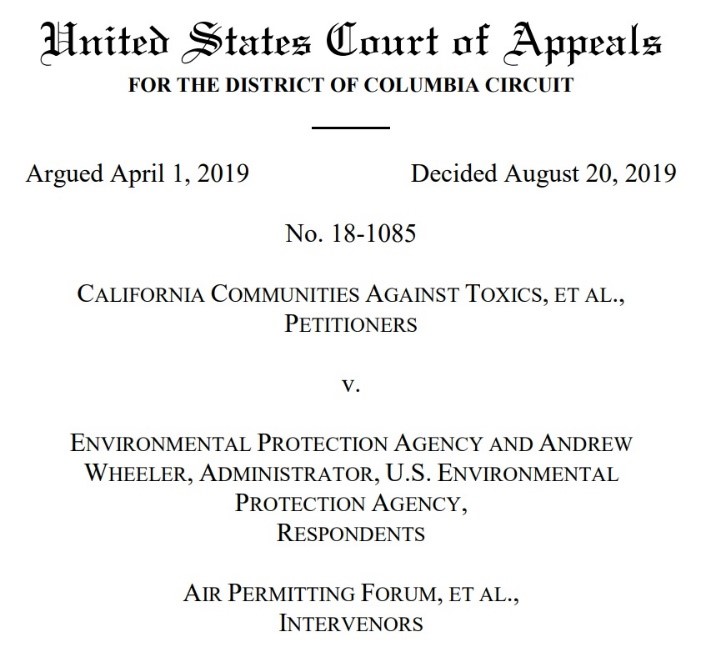Week in Regulation
August 26, 2019
Hours of Service Proposal Drives Notable Savings
Last week was relatively quiet on the regulatory front. Only six rulemakings included any quantified costs or savings estimates. The most notable of the bunch was a Department of Transportation (DOT) proposed rule affecting hours-of-service (HOS) standards for truck drivers. Across all proposed and final rules, agencies published $3.8 billion in total net cost savings and cut 71,835 hours of annual paperwork.
REGULATORY TOPLINES
- New Proposed Rules: 51
- New Final Rules: 68
- 2019 Total Pages: 44,456
- 2019 Final Rule Costs: $39 Billion
- 2019 Proposed Rule Costs: -$5.2 Billion
TRACKING THE REGULATORY BUDGET
The DOT proposal regarding HOS requirements provided the bulk of last week’s net savings. The rulemaking seeks to make various changes “to provide greater flexibility for drivers.” Overall, DOT estimates that such amendments could save affected entities more than $4 billion in net present value. Since it is a proposed rule, however, these savings will likely apply to the fiscal year (FY) 2020 regulatory budget under Executive Order (EO) 13,771 – not the current FY 2019 one.
There was a significant regulatory action under EO 13,771 last week as well. The final rule – published jointly by the Departments of Homeland Security and Health and Human Services (Agencies) – updates procedures regarding the “Apprehension, Processing, Care, and Custody of Alien Minors and Unaccompanied Alien Children.” The rule asserts the Agencies’ authority to operate contrary to the 1997 Flores settlement agreement that has previously governed such procedures. While it is deemed a “regulatory action” under EO 13,771, its potential costs are ultimately borne by increased federal spending to relevant contractors, thereby making it essentially a transfer payment rule that does not affect the regulatory budget.
So far in FY 2019 (which began on October 1, 2018), there have been 58 deregulatory actions (per the rubric created by EO 13,771 and the administration’s subsequent guidance document) against 34 rules that increase costs and fall under the EO’s reach. Combined, these actions yield quantified total net costs of roughly $11.8 billion. This total, however, includes the caveat regarding the baseline in the Department of Agriculture’s “National Bioengineered Food Disclosure Standard.” If one considers that rule to be deregulatory, the administration-wide net total is approximately $5.1 billion in net costs. The administration’s cumulative savings goal for FY 2019 is approximately $18 billion.
THIS WEEK’S REGULATORY PICTURE
This week, a court ruling on a notable Environmental Protection Agency (EPA) memo highlights the nebulous nature of administrative action.

This week the U.S. Court of Appeals for the D.C. Circuit ruled on a case brought by environmental groups and California regarding a memo issued in 2018 by then EPA Office of Air and Radiation head Bill Wehrum (the Wehrum memo). The Wehrum memo stated that it was the position of EPA that the Clean Air Act compelled EPA to allow major sources of toxic emissions to be reclassified as area sources – which face less burdensome regulatory hurdles – if emissions from the source in question fall below a certain threshold. This idea runs counter to an EPA memo from 1995 that once a source is considered a major source it cannot reclassify, also known as “once in, always in.”
The petitioners in the lawsuit argued, in part, that the Wehrum memo constituted a final agency action – that it acts as a final regulation – and therefore violated administrative procedure because there was no public notice and comment opportunity. An agency must have issued a final action in order for the content of the action to be judicially reviewable.
In a two-to-one decision, the court ruled that the memo was not a final action. While the court found the Wehrum memo to be the end of EPA’s decision making on the issue, it held that since the memo did not have “a single direct and appreciable legal consequence” – the second component of the two-prong test applied by the court in this case. Therefore, the court did not rule on the other parts of the petitioner’s challenge, including that the Wehrum memo’s conclusion violates the Clean Air Act.
The court’s discussion of its ruling highlights the lack of clear lines about the finality administrative action. This is exemplified in the introduction: “Despite the clarity of these questions, however, predictable answers have eluded courts and commentators… Indeed, the nature of agency action, it seems, is too often in the eye of the beholder.” The majority opinion concludes that “we are under no illusion that this opinion will be the Rosetta Stone of understanding the nature of agency action.” Helping to illustrate the point, the dissenting judge notes that similar guidance memos have been found to be final agency actions.
Regardless, the issue at hand will surely not go away. Last month, EPA issued a proposed rule to codify the conclusion of the Wehrum memo. More lawsuits will surely follow once that rule is finalized, but at least one question won’t be whether it constitutes a final agency action.
TOTAL BURDENS
Since January 1, the federal government has published $33.7 billion in total net costs (with $39 billion in finalized costs) and 42.4 million hours of net annual paperwork burden increases (with 37 million coming from final rules). Click here for the latest Reg Rodeo findings.












